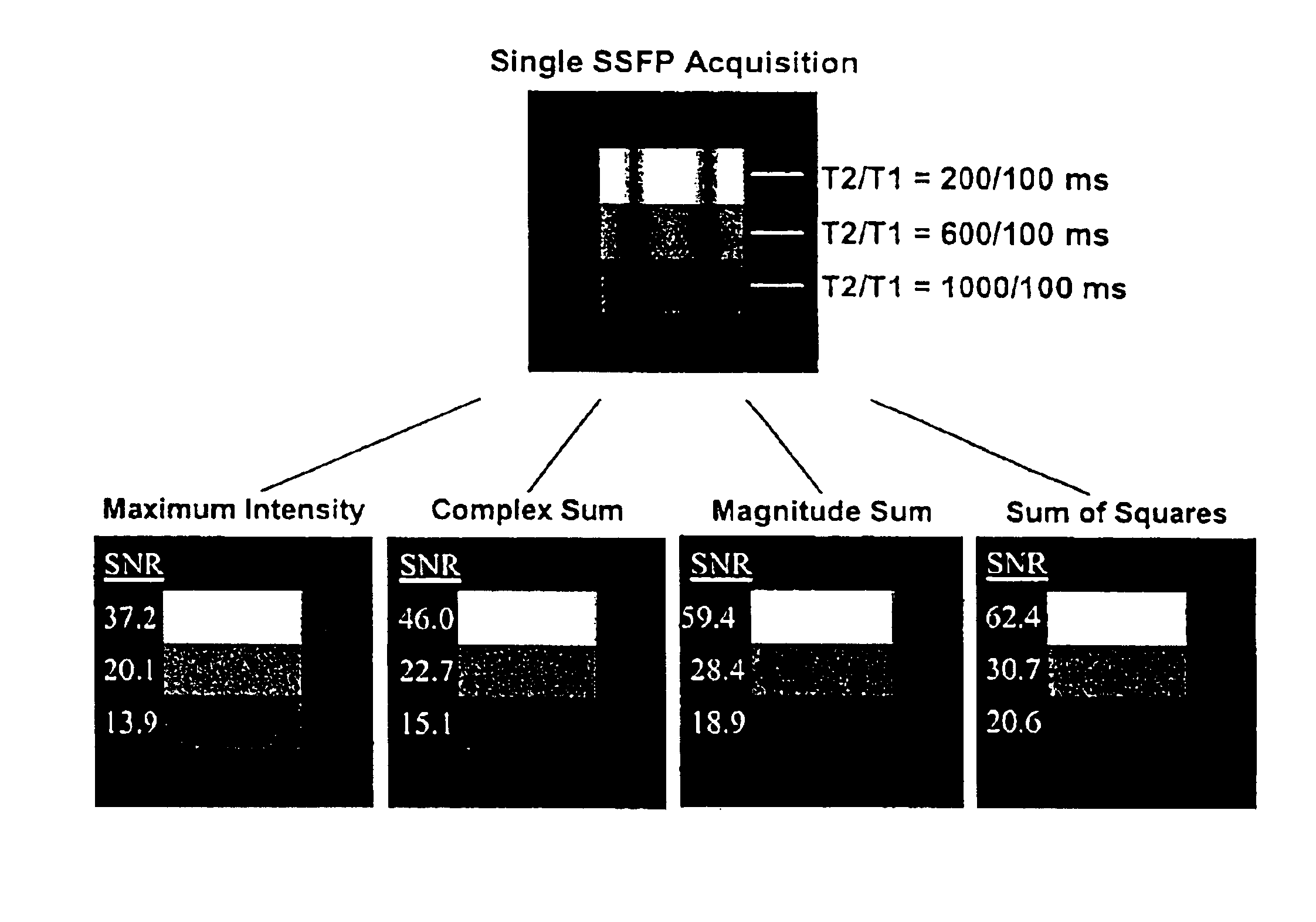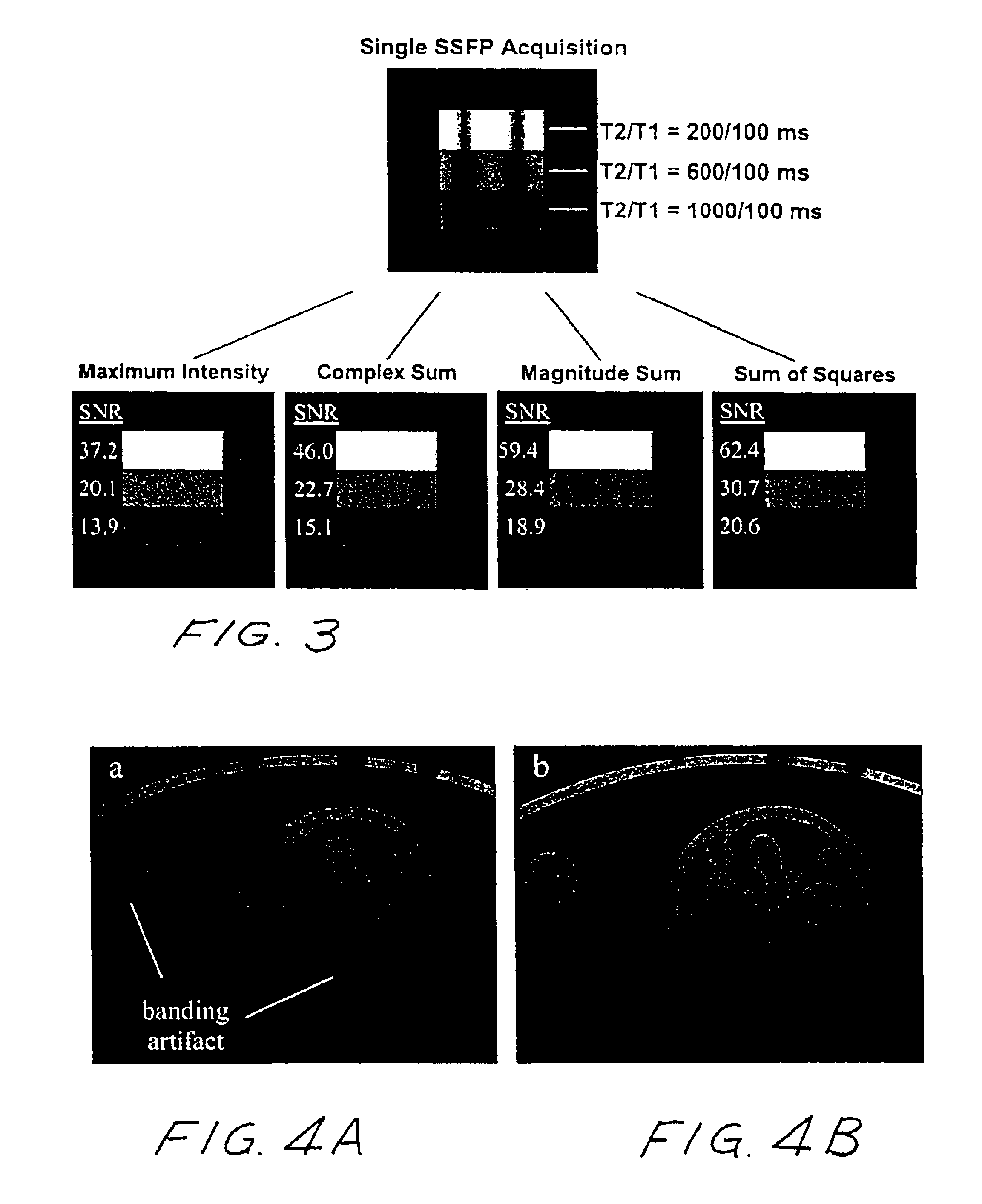Artifact reduction in SSFP MRI using weighted sum of combined signals
a combined signal and artifact reduction technology, applied in the field of magnetic resonance imaging (mri), can solve the problems of increasing the severity of the banding artifact, ssfp images often suffer from characteristic bands of signal loss, and the snr efficiency of each of these techniques suffers when compared with the snr efficiency of a single ssfp image acquisition. achieve the effect of reducing the artifacts of ssfp images and highlighting higher
- Summary
- Abstract
- Description
- Claims
- Application Information
AI Technical Summary
Benefits of technology
Problems solved by technology
Method used
Image
Examples
Embodiment Construction
[0017]As illustrated in FIGS. 1A, 1B, a refocused SSFP sequence includes a single RF excitation which is repeated periodically. All gradients used for slice selection or imaging are fully rewound over each repetitive time, TR. In the steady-state, the magnetization at points a and d is the same.
[0018]Magnetization is tipped about a traverse axis through an angle α. Between excitations, the magnetization undergoes a precession by an angle θ=2πΔfTR about the z-axis (direction of B0), where Δf is the tissue off-resonance, and also experiences both T1 and T2 relaxation.
[0019]During the sequence each spin is affected by RF pulses, relaxation and free precession. The steady-state magnetization for SSFP is a function of the sequence parameters flip angle (α), repetition time (TR) and echo time (TE) as well as the tissue parameters T1, T2, and resonant frequency shift Δf.
[0020]Signal readout is performed each period, with low spatial frequency information acquired at an echo time TE typical...
PUM
 Login to View More
Login to View More Abstract
Description
Claims
Application Information
 Login to View More
Login to View More - R&D
- Intellectual Property
- Life Sciences
- Materials
- Tech Scout
- Unparalleled Data Quality
- Higher Quality Content
- 60% Fewer Hallucinations
Browse by: Latest US Patents, China's latest patents, Technical Efficacy Thesaurus, Application Domain, Technology Topic, Popular Technical Reports.
© 2025 PatSnap. All rights reserved.Legal|Privacy policy|Modern Slavery Act Transparency Statement|Sitemap|About US| Contact US: help@patsnap.com



